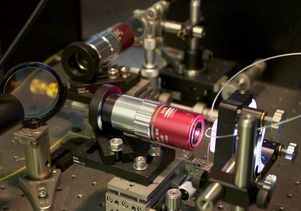One of the difficulties in working on a cure for cancer is that there is no reliable method to detect it in the first place. Current medical procedures usually detect cancer when the tumor is much larger, which limits treatment options right out of the gate. In the past few decades, medical scientists have seen promising developments in the use of bio chemicals to try and identify cancer cells.
These chemicals are injected into a blood sample and programmed to appear fluorescent through a microscope if certain cells are detected. The trouble is that cancer cells can mimic other cells on a genetic level, so it can be quite difficult to identify specific characteristics worth tracking.
UCLA scientists have debuted a new method that doesn’t harm the cells during the screening process. This new method can detect up to 16 individual characteristics, including the size of the cell and its biomass. This process requires two components that were invented at UCLA: the photonic time stretch microscope and an artificial intelligence that identifies cancer cells with a high degree of accuracy.
The photonic time stretch is a unique device that UCLA holds the patent to. It fires laser bursts through blood samples, like a flash. Because this process occurs in billionths of a second, the images would be impossible to detect without any kind of computer assistance. Specially designed optics must be used to try and capture and clarify the picture. The deep learning program does a great deal of the heavy lifting by distinguishing cancer cells from healthy white blood cells.
Phineas Upham is an investor from NYC and SF. You may contact Phin on his Phineas Upham website or Facebook page.
